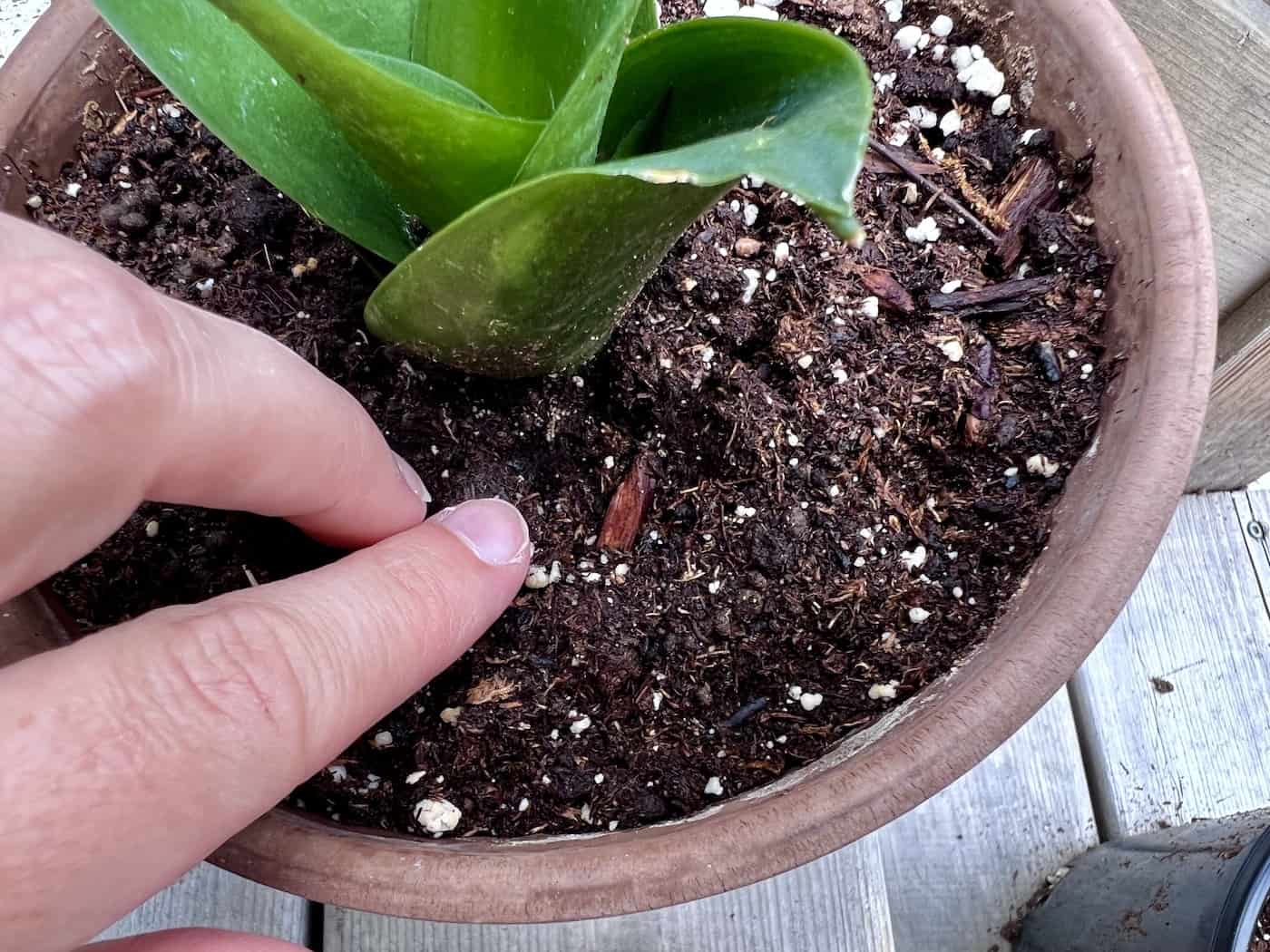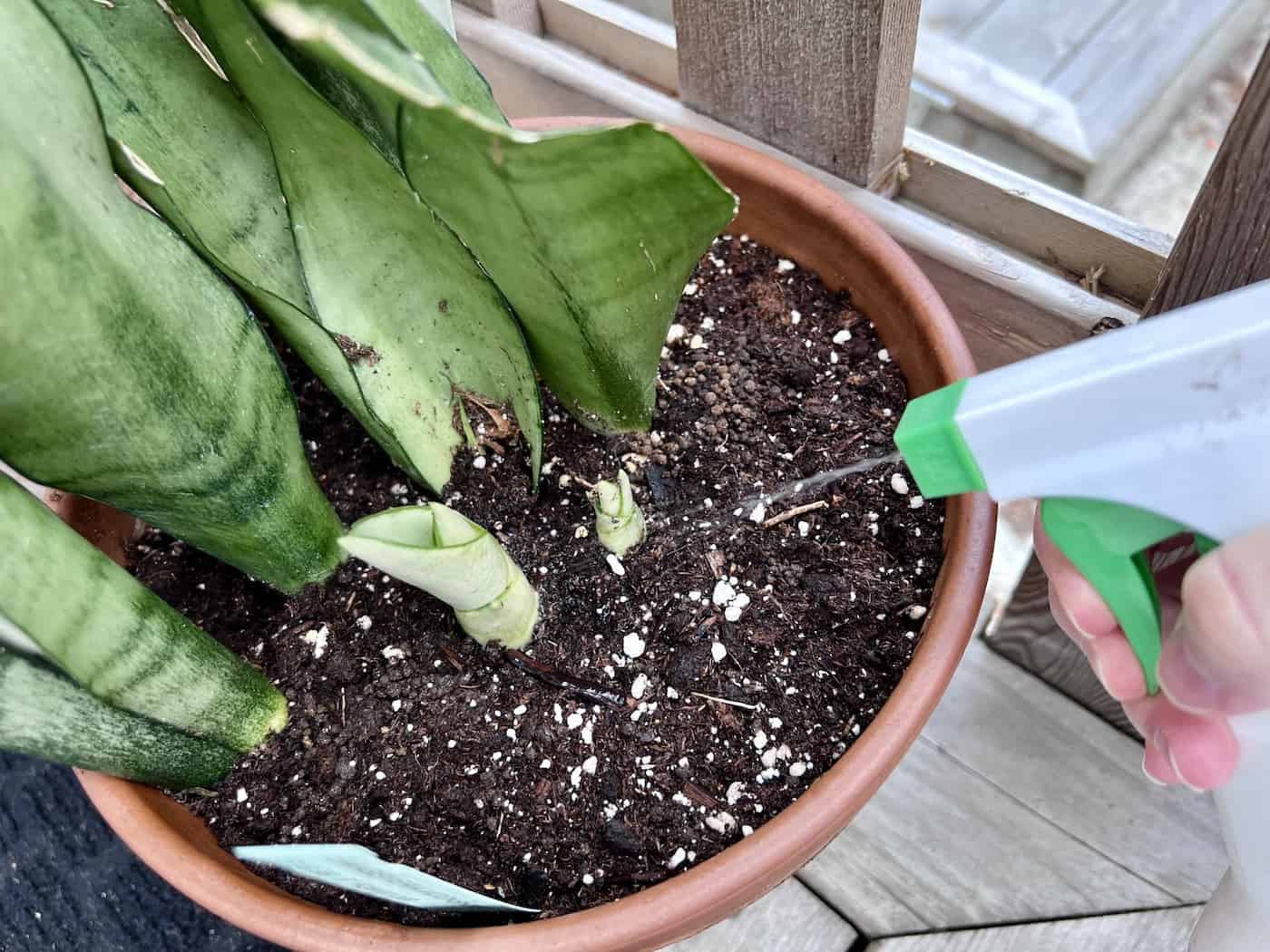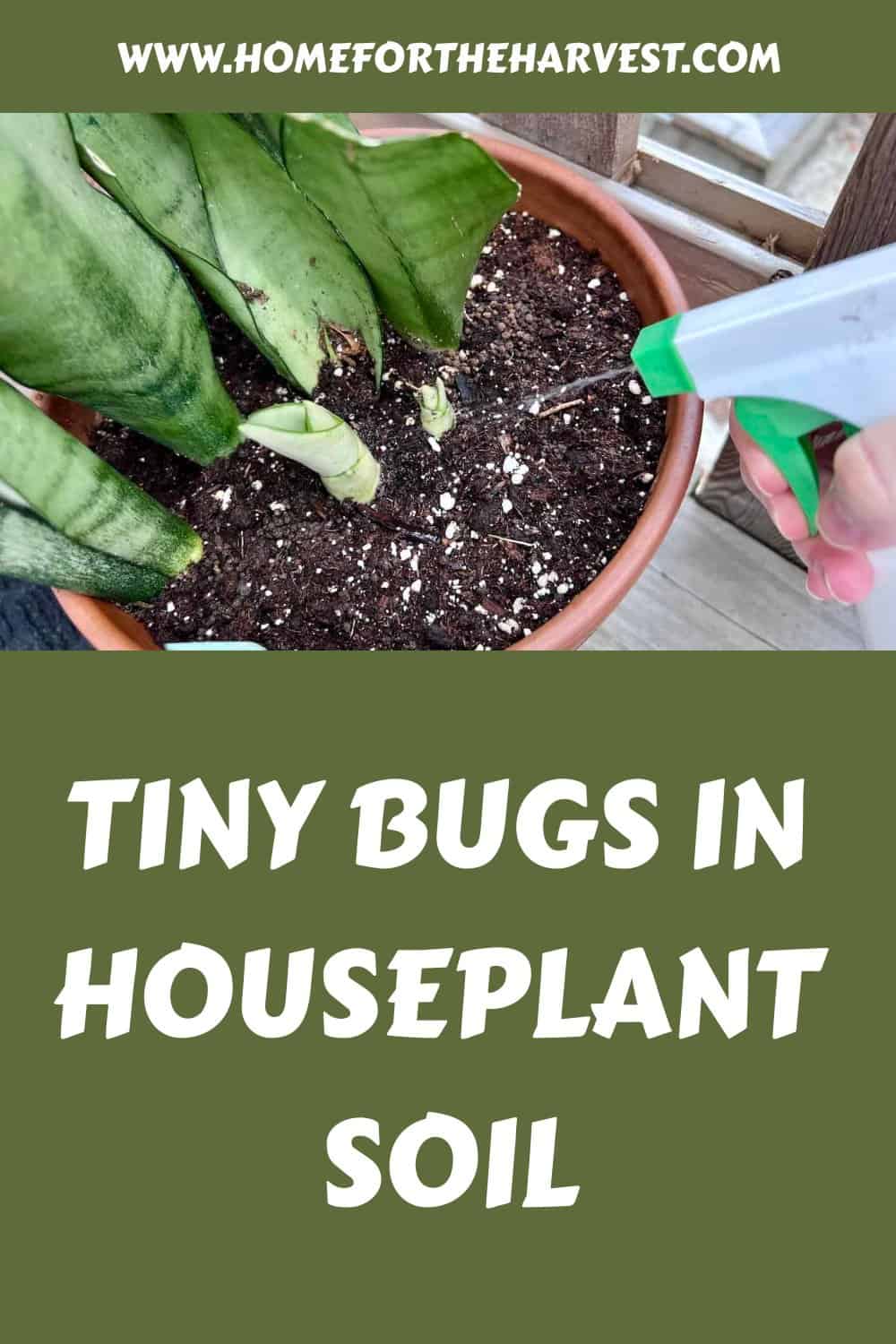For the past few years, houseplants have cemented themselves as the latest trend in interior design and in gardening. With that comes an annoying reality we all have to deal with – pests.
Tiny bugs in houseplant soil could be a number of pests but are usually fungus gnats or shore flies. Also, look out for spider mites and mealybugs that crawl around all parts of the plant, including the soil. Once you know what pest you’re dealing with, treat with insecticidal soap or horticultural oil and apply the preventative tips to stop them from coming back.
Read on to learn more about common houseplant pest bugs that are visible in and around the soil.
Common houseplant pests
The most common tiny bugs in indoor plants’ soil are fungus gnats, spider mites, mealybugs, and soil mites.
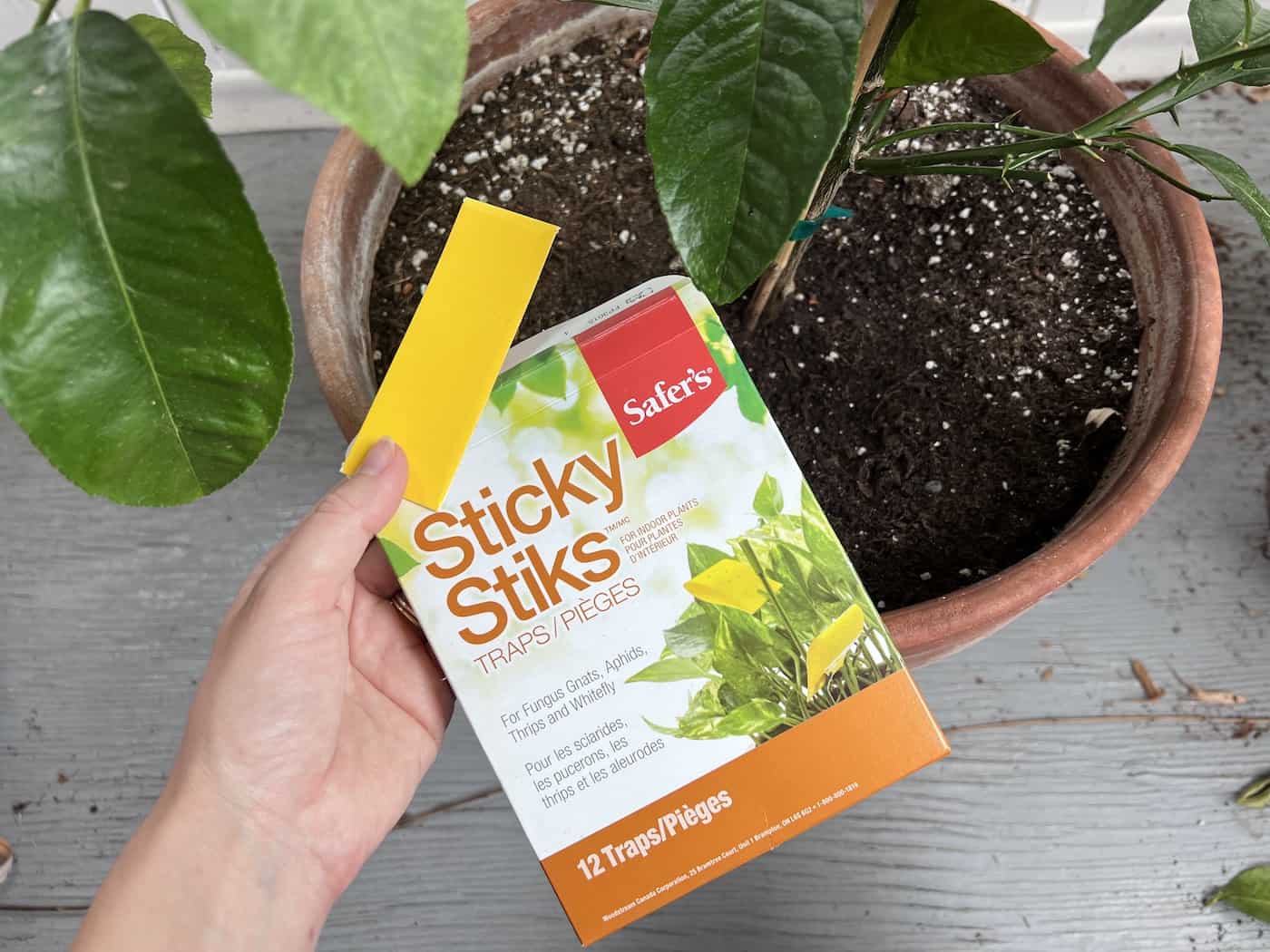
1. Fungus gnats
When you notice tiny bugs crawling around in your houseplant soil, fungus gnats are the most likely culprit. These tiny flying pests are one of the most annoying, hovering around plants and, eventually, all the people in your home.
Fungus gnats are also one of the more difficult pests to get rid of. They lay eggs in the soil, hatching in small white larvae that you may see moving around on the top layer. Once these larvae mature, they take flight and move around to the rest of your houseplants, laying more eggs and causing a massive infestation.
The easiest way to identify fungus gnats is to set up one of these little yellow sticky traps on a stick above soil level. If tiny black flies are stuck to it within a few days, fungus gnats are the likely culprit. Mild infestations can be treated with insecticidal soap, while severely affected plants may need repotting with fresh soil (see more details in the section below). You can also try beneficial nematodes. These treatments also apply to shore flies.
2. Spider mites
Although they are one of the smallest, spider mites are easy to identify by the webbing they leave behind.
These relatives of spiders – part of the Arachnida class – make homes on the undersides of leaves and between stems. They are so tiny that one is almost impossible to see without a magnifying glass. But, large infestations can be discovered by looking for any signs of webbing or red spots around the leaves of your houseplants.
These pests feed on the leaves and stems of houseplants, resulting in deformation and defoliation. They can also crawl around on the soil when infestations are severe, making the soil appear as if it is moving.
Washing the plant and drenching the soil can free the leaves from the webbing. You can treat the leaves with natural insecticide or try an essential oil spray.
3. Mealybugs
If the bugs crawling around your soil are white and leave behind a fluffy white powder, you’ve got a mealybug problem. These sap-sucking pests are quite common indoors and out and can quickly spread around your home if not controlled.
Mealybugs produce a white powder covering their bodies and the areas of the plant they are feeding on to protect themselves. They also lay eggs here, reproducing and spreading rapidly. You may not be able to spot a single mealybug, but you will certainly notice them once they cover entire stems, turning them stark white.
As with the above pests, try to remove all visible pests and then wash the whole plant. You can use a bit of dish soap to help clean the foliage. Dabbing any remaining bugs with isopropyl alcohol will usually kill them on contact. You can also try an organic insecticide.
4. Soil mites
The final pest to keep an eye out for is, luckily, one may not ever spot. Soil mites are tiny beneficial insects that feed on organic matter in the soil, breaking it down and improving soil health.
Depending on the species of soil mite, you likely won’t even notice these bugs at all due to their size. However, if you see bugs in your soil that stick around with no signs of struggle on the plants themselves, they can generally be left alone to do their work. An organic preventative plant treatment can help reduce the likelihood of the problem.
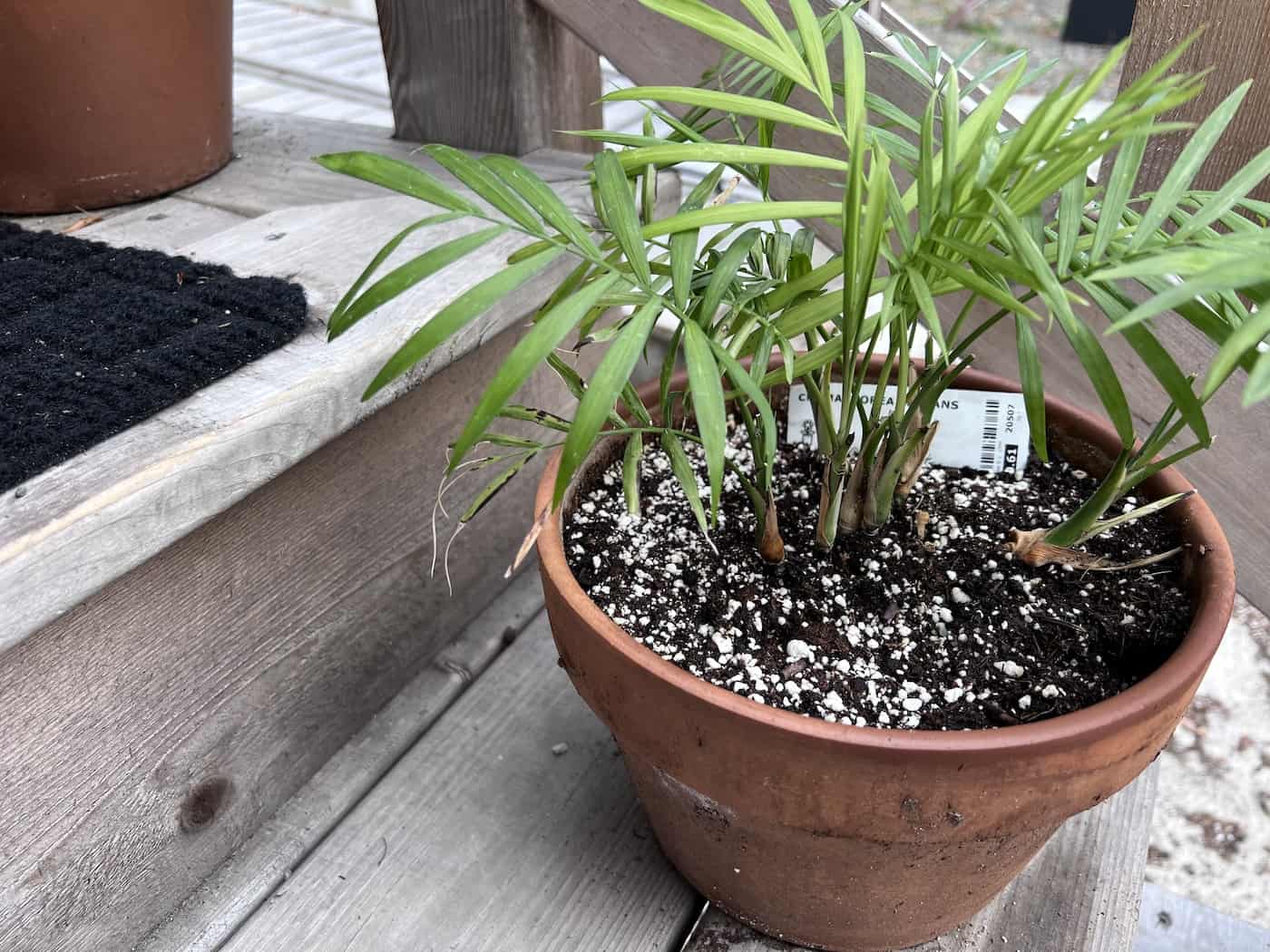
How to get rid of bugs in houseplant soil
Once you’ve identified the pest in infested plants, you can take the steps required to remove them.
Start by quarantining any affected plants that have bugs in them. This will stop them from spreading to any nearby houseplants, making the problem far easier to control. Wash as many of the bugs off the leaves and stems with a hose or shower head and dry off before the next step.
To remove any remaining pests, you’ll need to use organic insecticidal soap or horticultural oil. You can make natural insecticidal soap with products found around your home, or you can purchase a pre-made spray. Horticultural oils are also effective at suffocating pests and removing eggs, but they can’t be used on all houseplants.
Apply your chosen product according to the instructions on the packaging. You’ll need to apply follow-up treatments to remove all of them. They are usually applied every two weeks until all signs of pest damage are gone.
A fungus gnat infestation can be difficult to eradicate completely. They are known to fly off the plants when you try to remove them, flying back later on. Yellow sticky traps can be placed in the soil to catch any pests that may fly off, and soil drenches are available to deal with those hiding out in the soil.
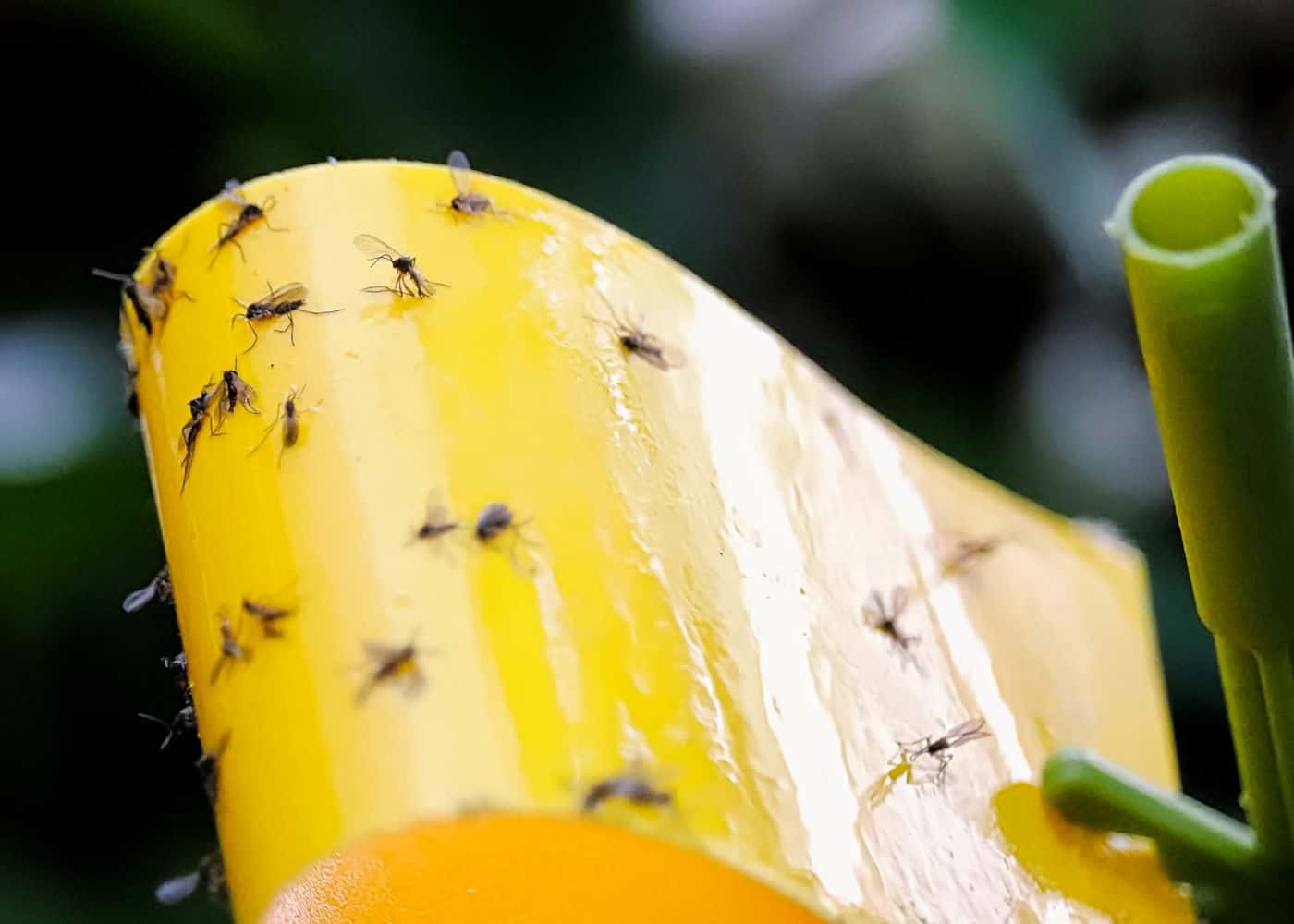
If any of these removal processes don’t work, it may be best to repot your plant, removing all the potting soil around the roots. Although this can lead to shock at a time when the plant is already stressed, it is one of the best ways to make sure the problem disappears completely. Wash all the remaining soil off the roots when repotting.
Plant in brand new houseplant potting soil. You can also pop a sticky stick on the top of the soil (see photo above) to check to see if any pests remain. If there are only a few, they’ll usually be easily trapped on the yellow paper.
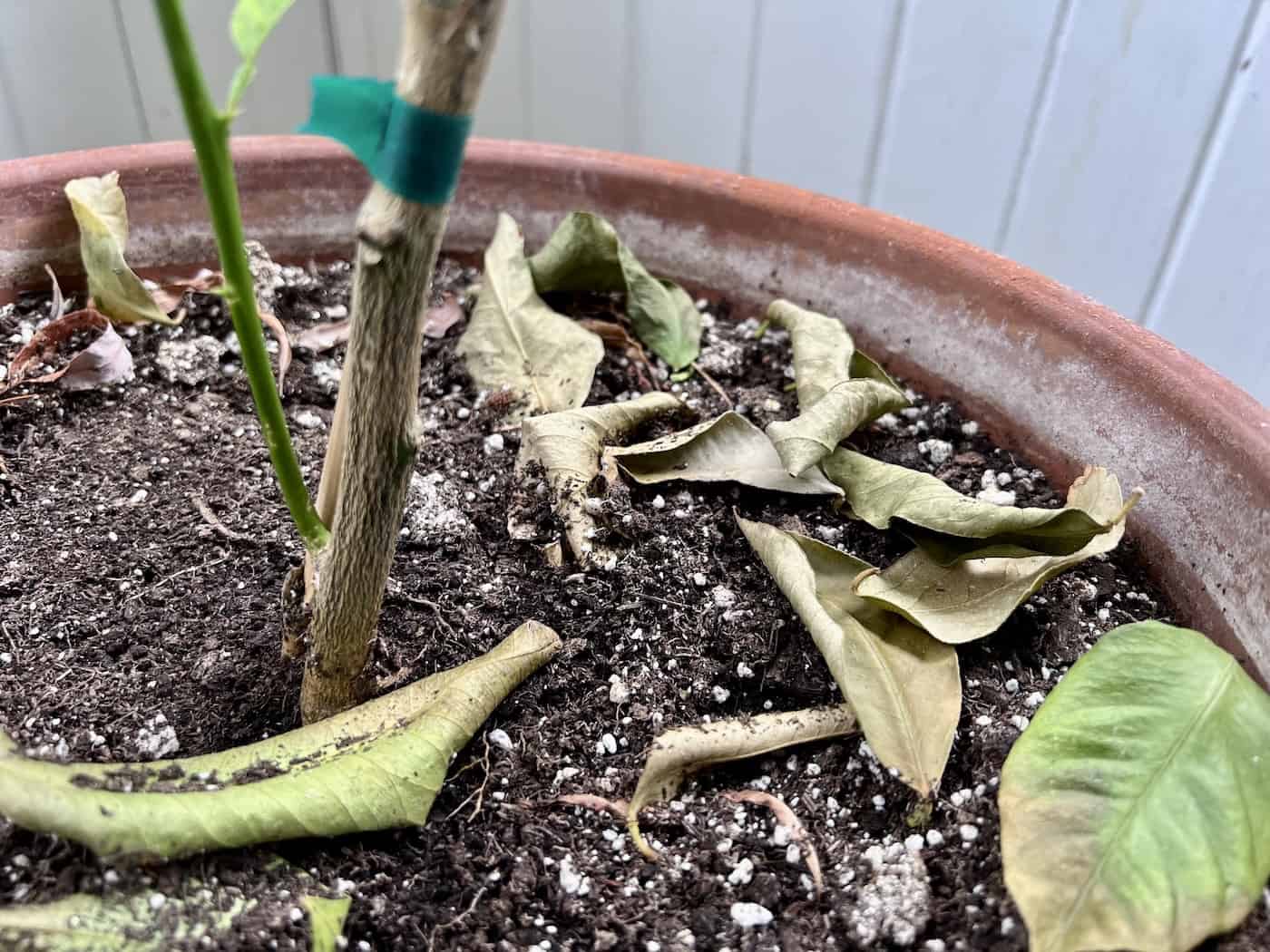
How to prevent bugs in houseplant soil
While it is possible to deal with bugs in houseplant soil, it is far better to prevent them from settling in in the first place. Follow these tips to limit your risk and keep your houseplants happy and healthy:
- Allow the top layer of soil to dry out before watering again. Many pests – especially fungus gnats – like to settle in moist soil. This will also prevent any potential overwatering that may lead to root rot.
- Check your plants before you bring them home. Inspect the soil and leaves for signs of pest problems before you purchase to avoid bringing the problem home and spreading it.
- Check your plants frequently and remove any signs of pests as soon as you spot them. Pest problems can get out of control quickly, so dealing with them as soon as they occur makes removal far simpler.
